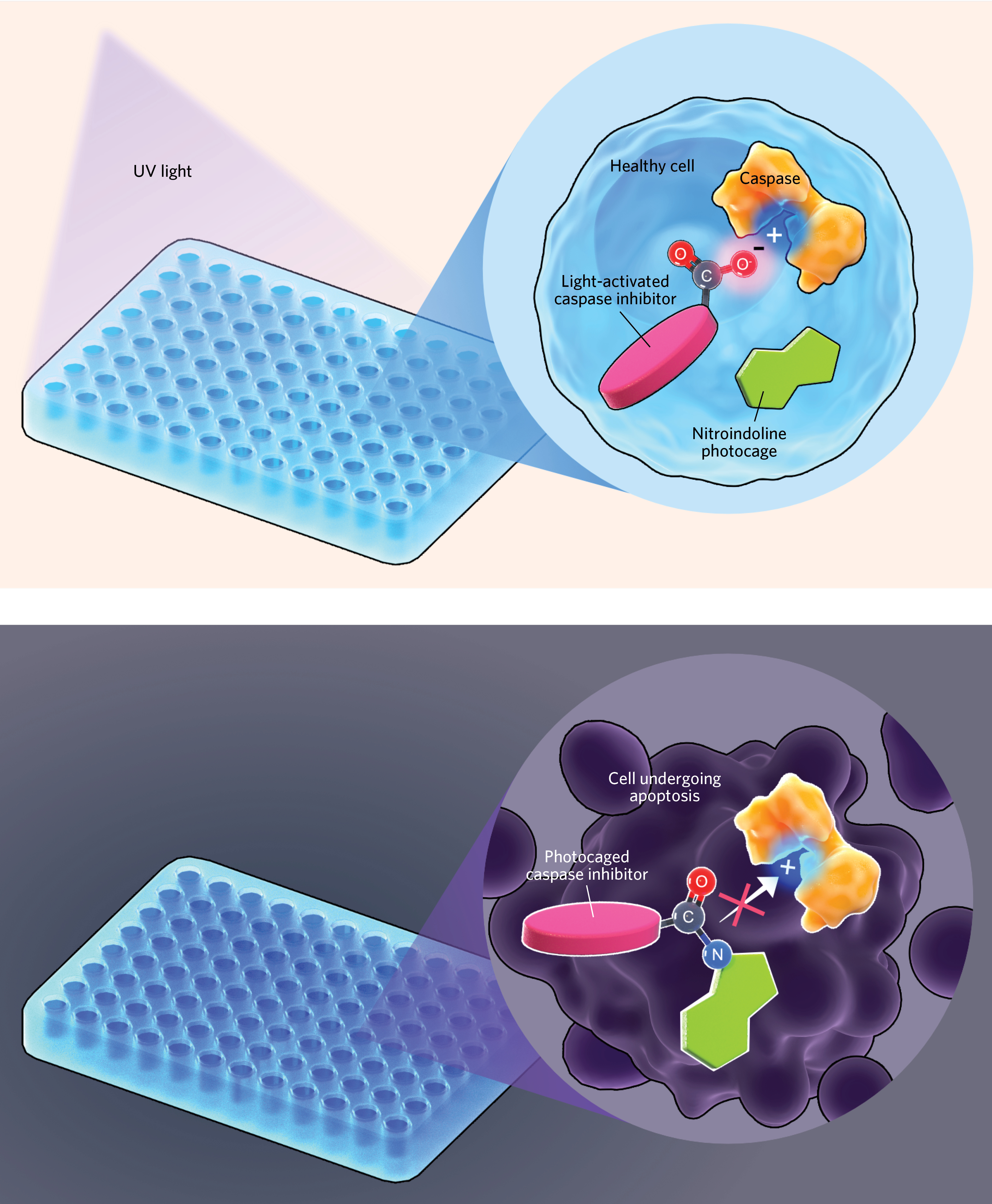Steven Verhelst, a chemical biologist at KU Leuven in Belgium, and his PhD student Suravi Chakrabarty designed an inhibitor of caspases, enzymes essential in apoptosis, that incorporated a chemical cage called nitroindoline to block the negatively charged amino acid residue that would normally fit lock-and-key into the caspase enzyme. When irradiated with UV light, the nitroindoline pops off, releasing the enzyme to bind and destroy caspases and halt apoptosis.

Fifteen minutes of UV irradiation removes the nitroindoline photocage from the caspase inhibitor, freeing the small molecule to prevent caspases from carrying out apoptosis of cultured human T cells.
© Melanie Lee
Read the full story.
Interested in reading more?

Become a Member of
Receive full access to digital editions of The Scientist, as well as TS Digest, feature stories, more than 35 years of archives, and much more!
Already a member?






